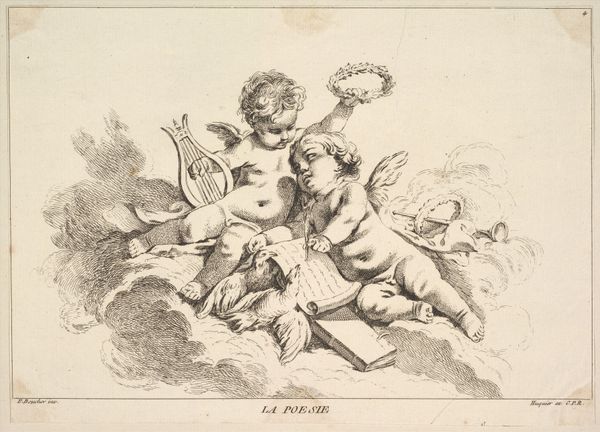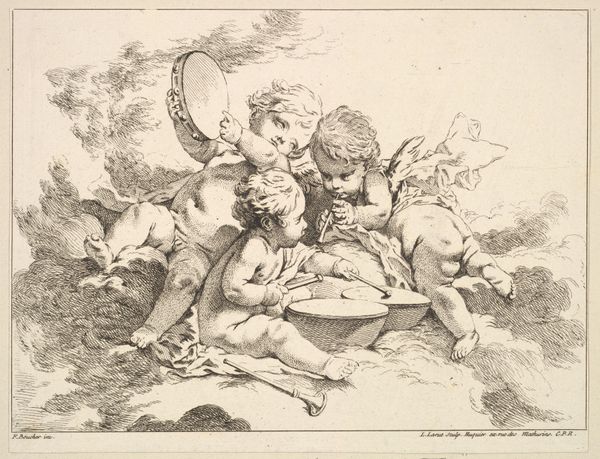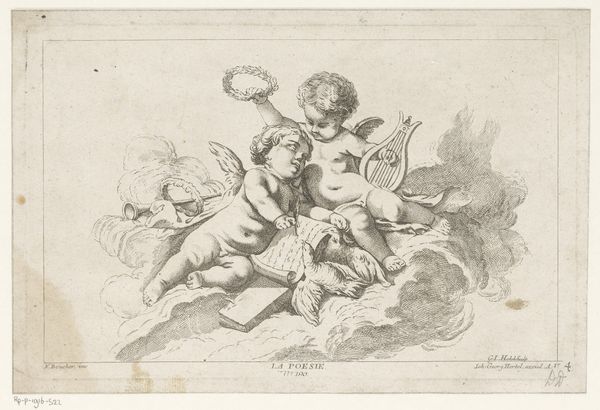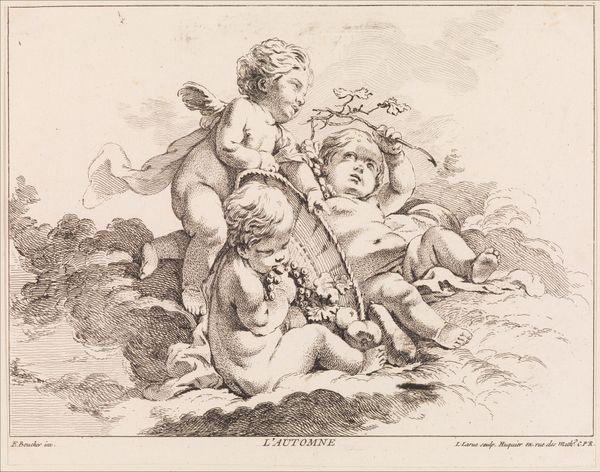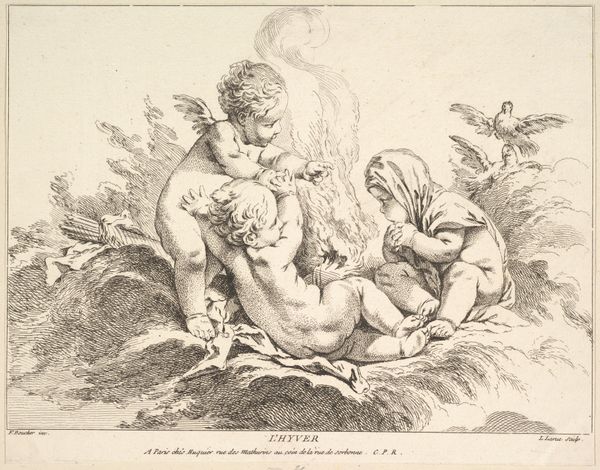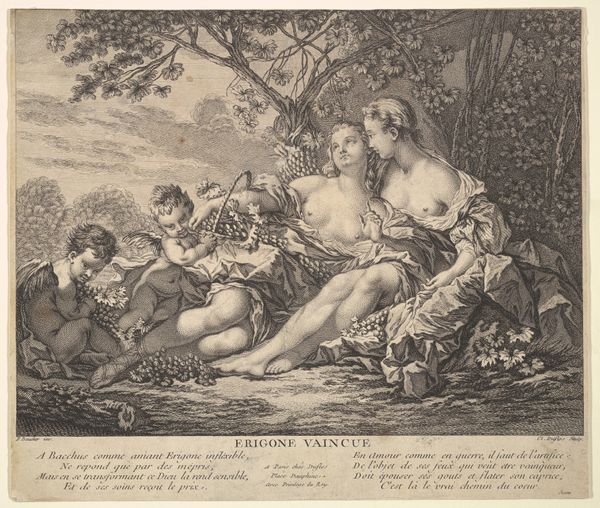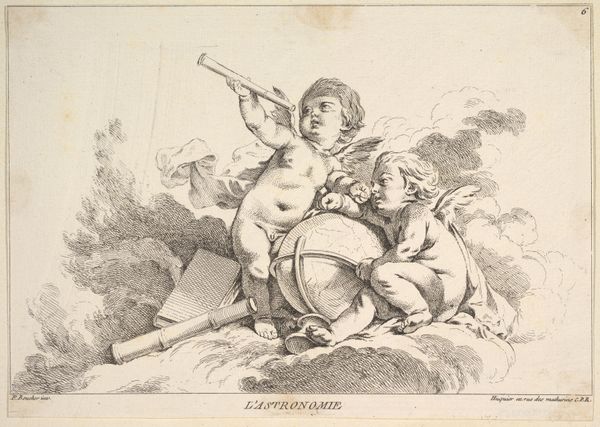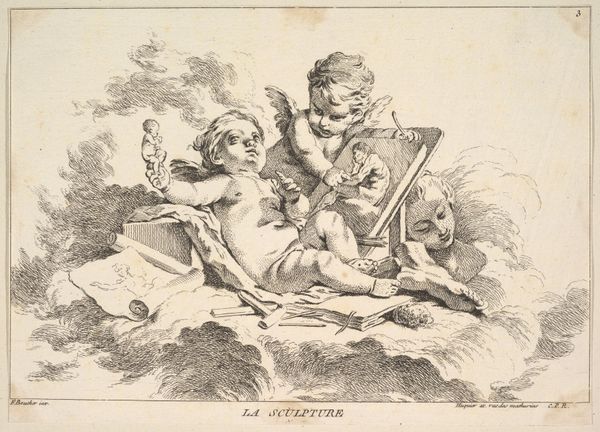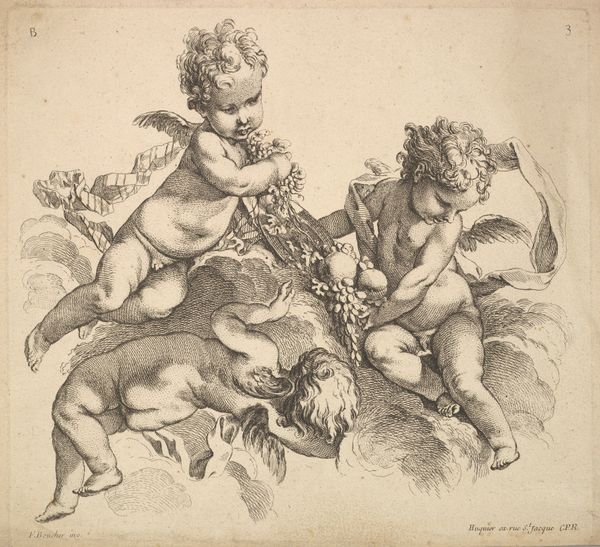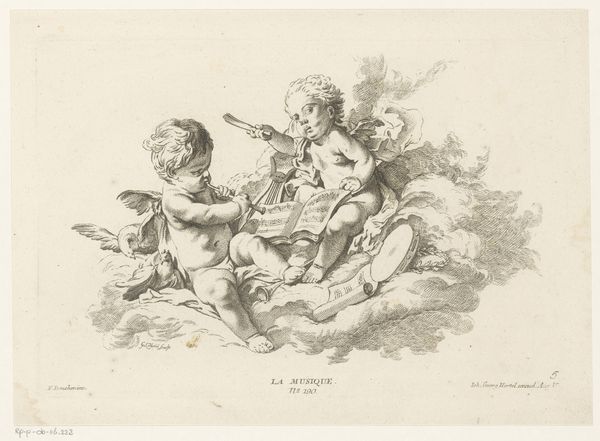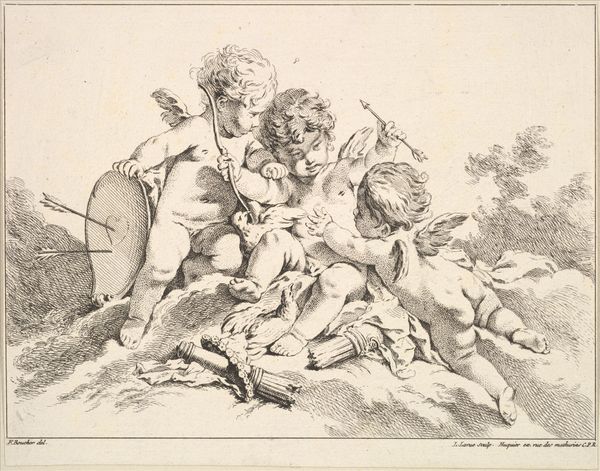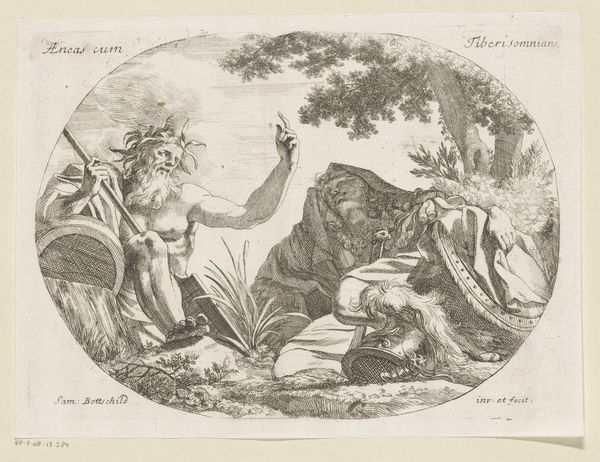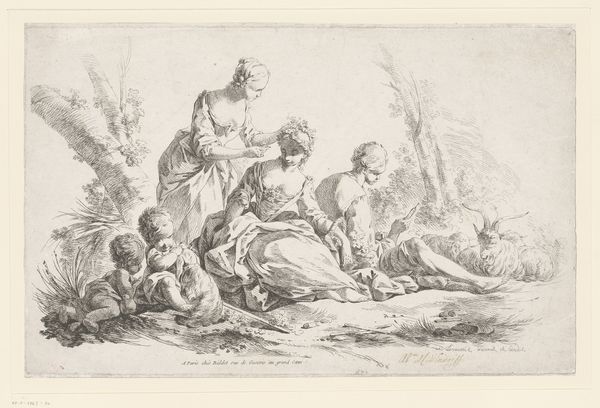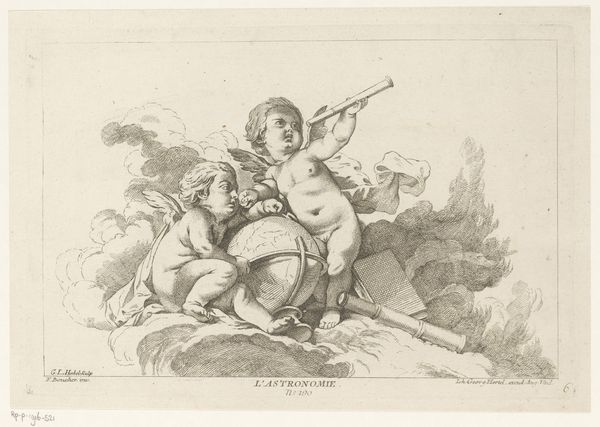
drawing, print, engraving
#
drawing
#
ink drawing
#
allegory
# print
#
figuration
#
engraving
#
rococo
Dimensions: sheet: 7 15/16 x 10 1/8 in. (20.2 x 25.7 cm)
Copyright: Public Domain
Curator: Welcome to Gallery 7, where we encounter "Spring," an engraving by Louis Félix de La Rue, created sometime between 1730 and 1777. It's currently housed at The Metropolitan Museum of Art. Editor: It immediately strikes me as an airy, almost weightless composition. The delicate linework gives the cherubic figures a buoyant feel, as if they're floating on clouds rather than resting. Curator: That’s characteristic of the Rococo style. De La Rue beautifully encapsulates Spring as an allegory, representing the season with playful putti. Note how flowers are used prominently here, and not simply as adornments. Editor: Absolutely. The flowers woven into wreaths and scattered about aren't just decorative; they function structurally, guiding the viewer's eye. Look at how the diagonal placement of the putti creates a sense of movement within the static image. The etched lines produce the impression of a cloudscape. Curator: Spring, as an idea, is continually reborn, isn’t it? The choice of cherubic figures tapping into our collective memory – childhood and rebirth—enhances the effect. One is almost compelled to smile, experiencing the carefree delight suggested in the scene. The floral wreath being prepared indicates rituals of regeneration and preparation. Editor: The seemingly random hatching and cross-hatching, on closer inspection, serve to define volume and texture, don’t you think? De La Rue's deliberate manipulation of light and shadow through these techniques sculpts the cherubs in an almost tactile way, emphasizing their rounded forms. Curator: And consider that Rococo artwork often adorned private homes, fostering a certain intimacy. I feel that La Rue intended to capture not merely the spectacle of spring but its joyful, almost secret, essence. This engraving acted as an intimate keepsake that renewed seasonal expectation. Editor: It's remarkable how much vibrancy and detail De La Rue managed to achieve with just lines and shading. The visual complexity elevates it beyond a simple illustration, prompting a renewed encounter each time you view it. Curator: It shows how an image rooted in specific time can become timeless, especially when symbols remain culturally persistent and regenerative. Editor: A testament to the power of thoughtful artistry, for sure.
Comments
No comments
Be the first to comment and join the conversation on the ultimate creative platform.
